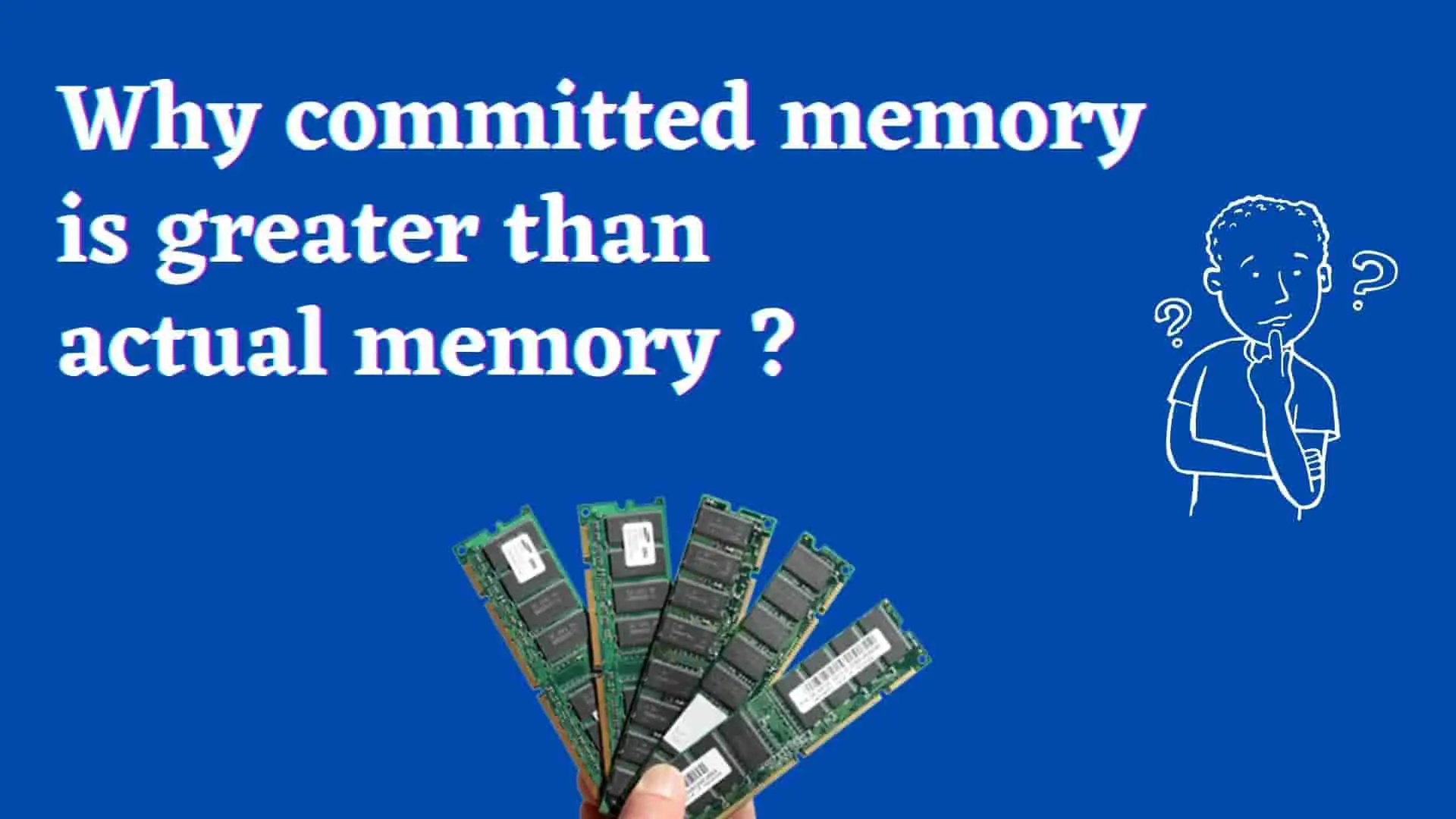How to Fix Discord Error: 'Installation Has Failed'

You may have noticed in the Windows Task Manager that Committed Memory is always greater than Actual Memory. And you might be wondering why Committed Memory is always greater than Actual Memory and why Committed Memory is showing around thrice of Actual Installed Memory, and what the hack is Committed Memory.
Ya Ya, you probably have some of these queries on your mind, and OurTechRoom will assist you in resolving these concerns
as clearly as possible. So, let's get started.
Actual Memory refers to the memory that has been installed on your computer. They are physical memories that exist in the physical world and peoples call them RAM. Normally if the more actual memory you have the better performance you will see in your system.
Committed memory is virtual memory that does not exist physically. They are reserved space on your hard disk. These spaces are used by Windows to store those tasks which are not repeatedly used by the CPU.
Actually, they are calculated by adding the size of physical memory and all paging files.
The relevance of virtual memory lies in the fact that it gives the illusion to the programmer that a process whose size is larger than the amount of main memory may also be executed. This is one of the reasons why virtual memory is so important.You may have an experience like you have 8GB RAM but your Committed Memory is around 24 GB or Higher.
Committed Memory is required because you suppose has 8GB of RAM(Actual Memory) and that all of the RAM was currently in use. For the new tasks, there is no RAM space available and then in this case your computer will get halt and has to wait for other tasks to complete. If this occurs, then the users who use it will be irritated.
Alternative options include the utilization of committed memory, also known as virtual memory. If you have a large number of requests, the operating system will load them in the Committed Memory, which is then accessed whenever the CPU needs them. In these processes first of all content of Committed Memory(Virtual memory) is loaded into the actual memory and then actual Memory(RAM) served the requested data to the CPU and GPU.
Also another reason is :Some apps require more memory than they need, too. The operating system will reserve the requested memory, which will be listed as Committed Memory even if the program is not using it.
Let's say that there is virtual memory (let's say 16 GB) and actual memory (let's say 4 GB), and that in between them there is a mapping address between Program Address and the address of virtual memory or actual memory exists.
Suppose CPU wants data from Program Address 0, then it looks at maps so surface it following things might happen:
1 If the OS discovered the maps of program address and ram address, it means that the information that the CPU is looking for is in RAM,
and the RAM will serve the data to the CPU. When data is discovered in RAM, it indicates that a cache hit exists.
2 Suppose OS found the maps of program address and RAM does not exist then these will search in Hard Disk (Virtual Memory) and then load the information into RAM and RAM serve data back to CPU. As the data does not exist in RAM so no cache hits exist instead Cache Miss exists. So, to serve the data first of all the needed content is loaded from committed memory to RAM and then RAM serves the data back to the CPU.
3 Suppose your RAM is full and cannot load further in it. Then CPU requested the data say at program address 5 then say OS looked at Map and found that data in virtual memory. The data was present in virtual memory from HDD into RAM but the RAM was full, so first of all RAM will remove the oldest data from it which was still for a long time into the HDD, and then content that was currently requested by CPU are loaded in that space. And RAM serves those data back to the CPU.
4. Suppose your RAM is completely in use and CPU requests data say at program address 4 then OS looked at Map and found that data in Virtual Memory instead of RAM, then as actual memory is filled, so first of all unused content which is stale in the RAM are moved to Virtual memory so some space in RAM will be available. In that available space, virtual memory will load the content. And then RAM serves the data back to RAM.
Committed Memory is always large so that the user who is using the computer does not experience a lack of memory issue. If there is no space available in physical memory, the operating system typically pushes non-used content to virtual memory. So, when the user requests the same content which was in virtual memory is again loaded back into RAM and the user receives the requested content.
You do not have to worry about it.OS automatically does for us.
Conclusion:
Having Committed Memory (or Virtual Memory) seems to be very useful especially if you have low physical memory.Also, you do not have to worry much about these memories as these processes is out of your control.OS actually does the management of those resource allocations and mapping.
In summary, because of the use of virtual memory, and paging of memory to disk, memory overcommitment by applications Committed Memory can be larger than Actual Memory.




